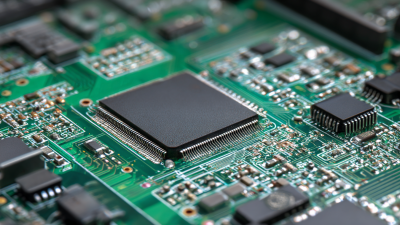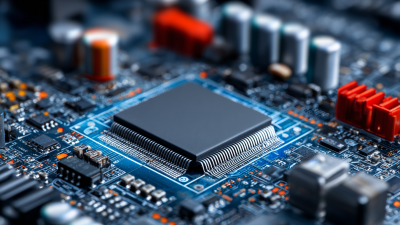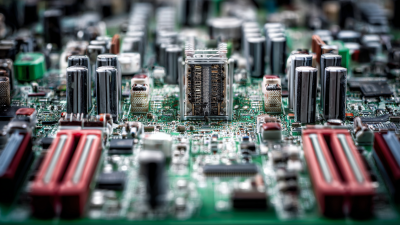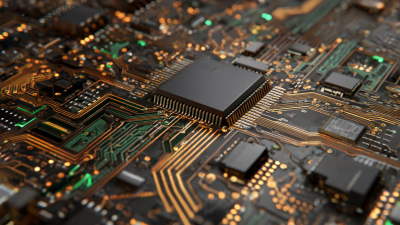The future of PCB assembly holds immense promise as the electronics industry continues to evolve and demand for sophisticated printed circuit boards escalates. According to a report by Research and Markets, the global PCB market is expected to reach $85.31 billion by 2024, growing at a CAGR of 3.5%. As technology advances, the intricacy of PCB designs increases, necessitating the adoption of advanced assembly techniques to ensure precision and reliability.

Moreover, a study by IPC reveals that manufacturers emphasizing optimized assembly processes can significantly reduce production costs by up to 30% while enhancing product quality. This guide delves into the essential techniques for mastering PCB assembly, providing insights that will equip professionals with the tools needed to achieve optimal results in this fast-paced sector.
Understanding the basics of PCB design is crucial for achieving effective assembly. According to a recent report by IPC, nearly 60% of manufacturing defects are attributed to design errors, highlighting the importance of meticulous planning during the design phase. Proper PCB design not only facilitates smoother assembly processes but also enhances the overall reliability of the final product. Key aspects such as component layout, trace width, and spacing must be considered to minimize the risk of issues such as signal integrity problems and thermal management failures.

Moreover, a well-thought-out PCB design can significantly impact production efficiency. The same IPC report indicates that optimizing the design for automated assembly can reduce assembly time by up to 30%. Techniques like using standardized footprints and limited layer count can streamline the manufacturing process, allowing for faster turnarounds and reduced costs. By grasping these fundamental concepts, engineers can create PCBs that are not only easier to assemble but also more resilient, ultimately leading to better performance and longevity in various applications.
When it comes to mastering PCB assembly techniques, having the right tools and equipment is crucial for achieving optimal results. According to a recent industry report, nearly 30% of PCB assembly defects can be traced back to inadequate tooling and equipment. Investing in high-quality tools not only minimizes errors but also enhances production efficiency. Essential tools include soldering irons with temperature control, automatic screwdrivers, and precision hand tools. Additionally, assembling a reliable inspection system, such as a digital microscope or automated optical inspection (AOI) machine, can significantly improve quality control standards.
**Tip:** Always choose a soldering iron that allows for adjustable temperature settings. This ensures proper solder joint creation and helps prevent component damage due to overheating.
Furthermore, the importance of workspace layout cannot be overlooked. A well-organized assembly area can lead to up to a 50% increase in workflow efficiency, as reported by the IPC Association Connecting Electronics Industries. Utilize foam inserts for your tools and components to keep everything in its place, reducing search time and enhancing productivity.
**Tip:** Regularly calibrate your equipment to maintain precision and accuracy, which is essential for the longevity of both the equipment and the boards being assembled.
| Tool/Equipment | Description | Purpose | Recommended Use |
|---|---|---|---|
| Soldering Iron | Hand tool used to solder components onto the PCB. | Component attachment | For both through-hole and surface-mount devices. |
| Stencil Printer | Machine that applies solder paste on the PCB. | Solder paste application | Used for surface-mount component assembly. |
| Reflow Oven | Oven that heats the PCB to melt solder. | Soldering process | For soldering surface mount components. |
| Pick and Place Machine | Automated machine that places components on the PCB. | Assembly efficiency | Used for high-speed component placement. |
| Inspection Microscope | Optical device for examining PCB solder joints and placements. | Quality control | Used in final assembly inspection. |
Soldering is a fundamental skill in PCB assembly, essential for creating durable electrical connections. For beginners, mastering this technique involves understanding the right tools and materials. Start with a quality soldering iron, preferably one that offers adjustable heat settings, to ensure precision. Lead-free solder is recommended for its environmental benefits, and flux can enhance the flow of solder, making the process smoother.

Once equipped, the next step is to prepare the PCB and components. Clean the surfaces to remove any debris that could impede adhesion. Place the component leads into the PCB holes and secure them with a bit of tape to keep them in place. When soldering, ensure that you heat both the component lead and the pad on the PCB simultaneously, allowing the solder to flow evenly.
Practice good technique by applying enough solder for a strong joint without creating excess that can cause shorts. With patience and practice, beginners will find their soldering skills improving, leading to better results in their PCB assembly projects.
When diving into PCB assembly, avoiding common mistakes can significantly improve both efficiency and product quality. According to a report by IPC (Institute of Printed Circuits), nearly 30% of all PCB assembly defects arise from improper soldering techniques. Ensuring adequate solder application, avoiding bridging, and maintaining optimal temperatures during the soldering process can mitigate these risks. Implementing automated optical inspection (AOI) systems can further enhance quality control, catching issues before they escalate in the production pipeline.
Another prevalent mistake is improper component placement. Research suggests that up to 15% of assembly failures are attributed to misaligned components. This can lead to increased rework costs and delayed project timelines. Utilizing precise pick-and-place technologies alongside robust design rule checks (DRC) can help maintain alignment accuracy and reduce the likelihood of errors during assembly. Continuous training for assembly technicians is also essential, as 40% of errors can be traced back to inadequate operator knowledge and skills. Fostering a culture of ongoing education can lead to better outcomes in PCB assemblies.
In the realm of PCB assembly, testing and quality assurance are paramount to ensuring that the final product meets stringent industry standards and operational requirements. According to a report by IPC, nearly 30% of PCB defects originate from assembly processes. Therefore, implementing robust testing methodologies is crucial to identifying and rectifying issues early in production. Techniques such as Automated Optical Inspection (AOI) and X-ray inspection are increasingly used to catch defects that might otherwise go unnoticed. AOI systems can achieve up to 98% defect detection rate, making them a vital tool in modern PCB assembly.
Moreover, adhering to quality assurance protocols like Six Sigma can enhance the effectiveness of PCB production processes. Research indicates that companies implementing Six Sigma methodologies in their PCB assembly lines reduced defects by up to 70%. By focusing not only on assembly accuracy but also on the overall quality of components and materials, manufacturers can significantly improve product reliability. Continuous improvement practices, including regular audits and feedback loops, contribute to an environment where quality is an integral part of the production process, ultimately yielding assemblies that meet or exceed customer expectations.







